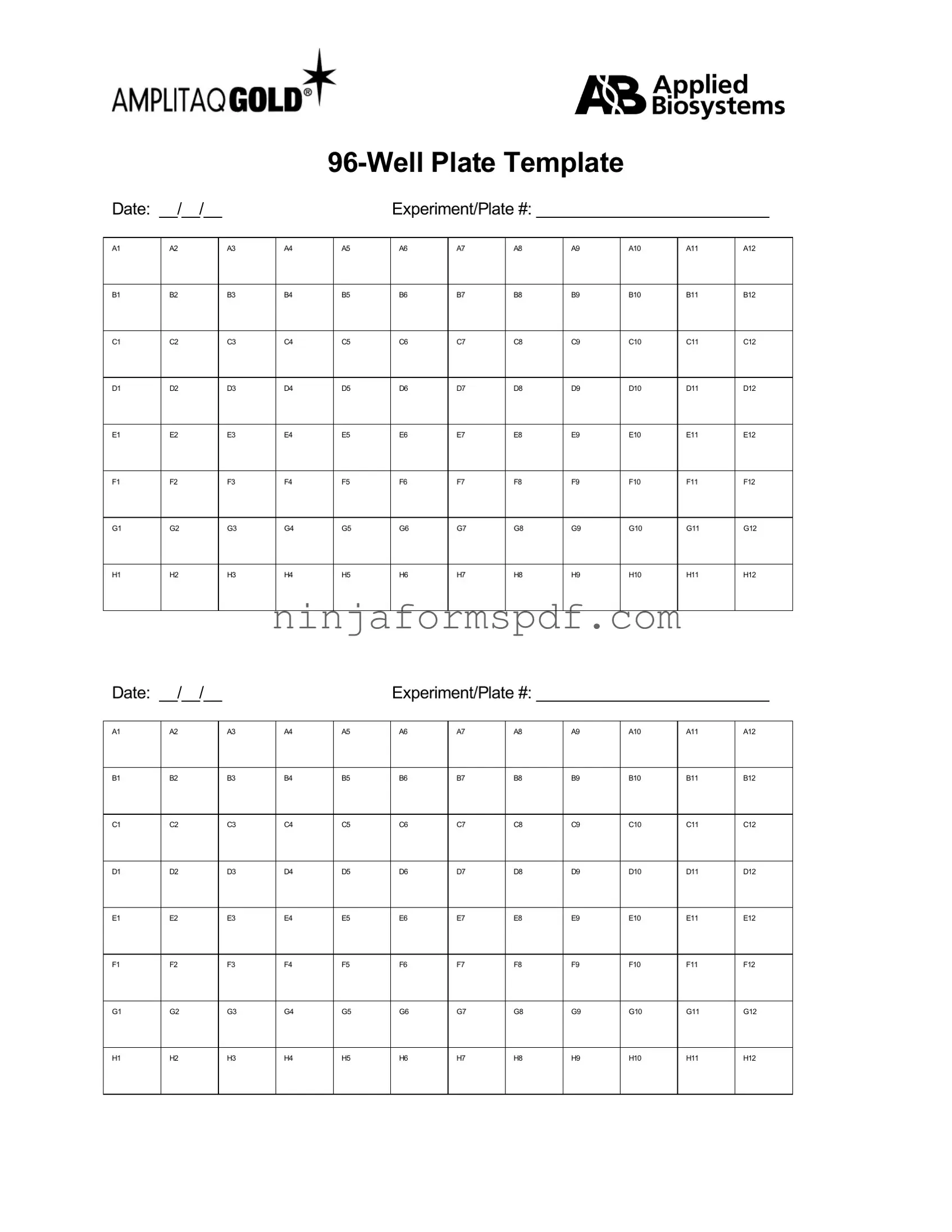While the details of the 96 Well form itself are not provided, it’s understood within the context of laboratory and research settings. Similar to the 96 Well form, the 384 Well Plate Layout is a document used in laboratory research to outline the setup of samples in a plate with 384 wells. This form allows for a higher density of samples compared to the 96 Well form, facilitating enhanced efficiency and more data collection in a single experiment. Both documents serve as critical guides for researchers to accurately track and execute their experiments.
The Sample Submission Form, commonly found in laboratories and research facilities, bears resemblance to the 96 Well form. This document is essential for submitting samples for analysis or testing, detailing the type of tests required, sample identification, and specific instructions. Like the 96 Well form, it plays a pivotal role in ensuring that the samples are correctly processed and analyzed, providing a structured approach to sample management.
The Chain of Custody Form is another document that shares similarities with the 96 Well form, mainly in its purpose of meticulously recording the handling of materials or samples. Used in legal, medical, and research fields, this form tracks the possession, transfer, and location of samples to ensure integrity and accountability. Both documents are fundamental in maintaining precise records and ensuring the reliability of the data or results obtained from the samples.
Experiment Protocol Sheets are closely related to the 96 Well form in their utility for documenting the steps, materials, and methods used in experiments. These sheets are vital for replicating studies, ensuring consistency in research, and validating results. They help researchers plan and execute their experiments systematically, similar to how the 96 Well form organizes sample placement for studies.
Data Collection Sheets, often used in various research and survey contexts, share similarities with the 96 Well form through their role in systematically gathering and organizing information. These sheets vary widely in design but fundamentally serve to compile data in an orderly manner, enabling further analysis and interpretation, much like how the 96 Well form organizes sample data for analysis.
Laboratory Notebook Pages, while more informal than the 96 Well form, are analogous in their function of recording experimental details, observations, results, and notes. Researchers use these pages to document their work thoroughly, ensuring that all aspects of their experiments are accounted for, which is critical for future replication and verification, similarly to the detailed tracking provided by the 96 Well form.
The Equipment Calibration Log is another document type that, while distinct in its direct purpose, is similar to the 96 Well form in its emphasis on accuracy and reliability within laboratory settings. This log tracks the calibration of equipment to ensure precise measurements and optimal operation. The maintenance of accurate records, as seen in both the Equipment Calibration Log and the 96 Well form, is essential for the integrity of scientific work.
Inventory Tracking Sheets for laboratory supplies and reagents also mirror the 96 Well form in their organizational role. These sheets are crucial for managing the availability and condition of items needed for research, ensuring that studies can proceed without delay. The systematic approach to tracking parallels the layout organization seen in the 96 Well form, facilitating efficiency and accuracy in research activities.
Lastly, the Incident Report Forms used in laboratory and research environments share an objective similarity with the 96 Well form, focusing on documentation and accountability. These forms are essential for recording any unexpected events or accidents, contributing to the improvement of safety protocols and procedures. Like the 96 Well form, they provide a structured method for recording specific information, which is crucial for analysis and corrective action.

